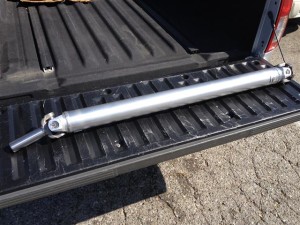Admittedly an aluminum driveshaft isn’t at the top of the list of budget performance upgrades. The biggest bang-for-the-buck improvement is just more track time, period. Then there’s the basics of good tires, good set-up, and good maintenance. Once the basics are covered you can start working on upgraded suspension, brakes, gearbox and engine, and of course weight loss (both car and driver). But once all the low-hanging fruit is gone, you should start doing your cost vs performance calculations wisely when picking the next upgrade. Basic physics shows the greatest advantage in weight reduction comes from unsprung mass and from rotating mass, ie wheels and tires, brake components, crankshafts, and yes, driveshafts.
After a recent gearbox swap in the 710, I was needing a new driveshaft, so I figured it was an appropriate time to do an aluminum driveshaft upgrade. At the same time I increased the diameter of the driveshaft from 2.5″ to 3″. I found some engineering tables that show the dramatic strength increase realized by just small increases in a tube’s diameter, therefore helping reduce driveshaft whip at high speeds. And even with the increase in tube diameter, I dropped the weight substantially by switching from steel to aluminum, from 15 lbs to 11 lbs. Yes, it cost more at $450, but since I was needing to have one built anyways, I think it’s an upgrade worth the money. If you’ve really got some extra bucks to throw into the project, a carbon fiber driveshaft will increase strength and reduce weight even further. The guys at South Bay Driveline in San Jose, CA did a great job as usual, and they don’t make me feel stupid with all my dumb questions ;-)

Leave a Reply